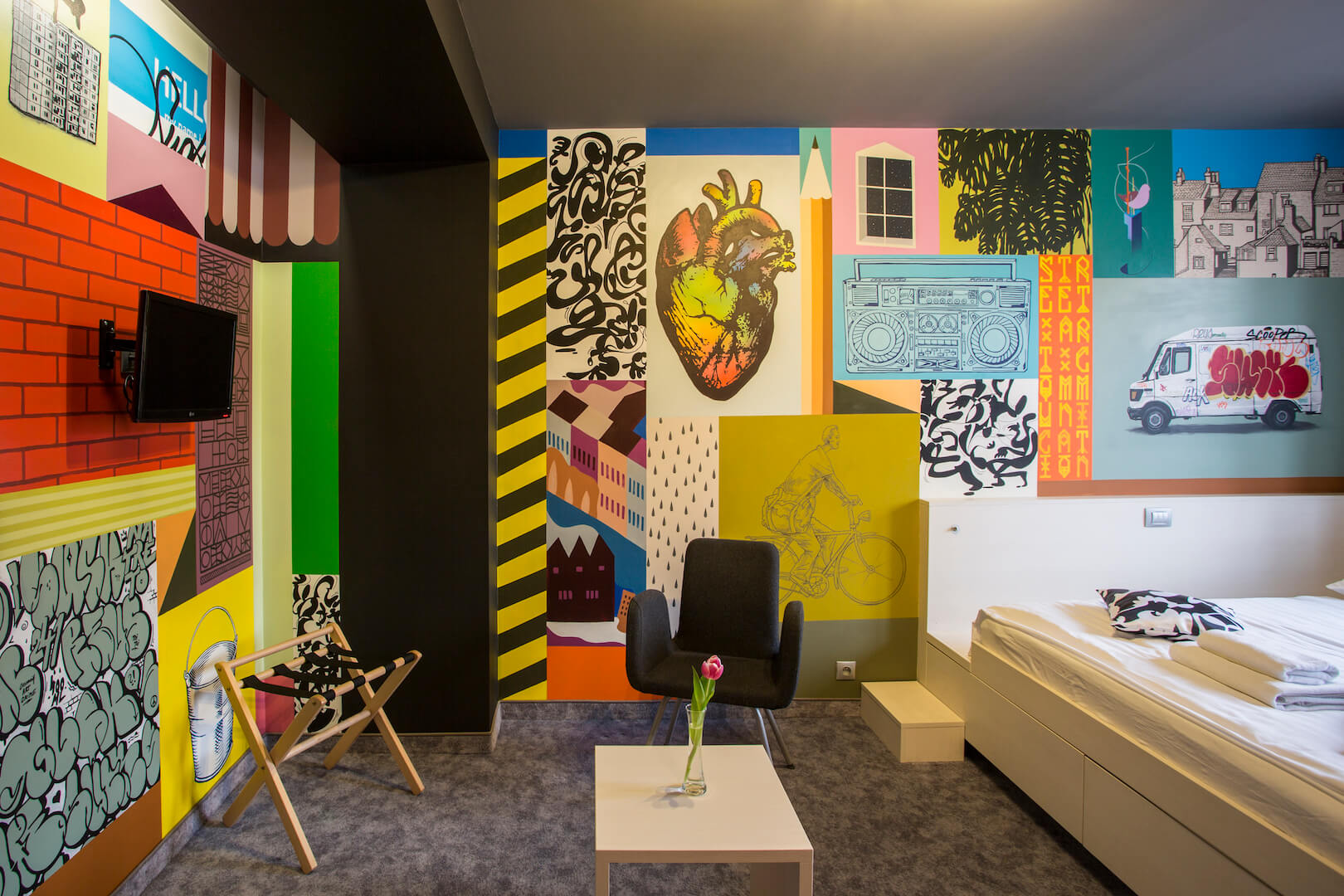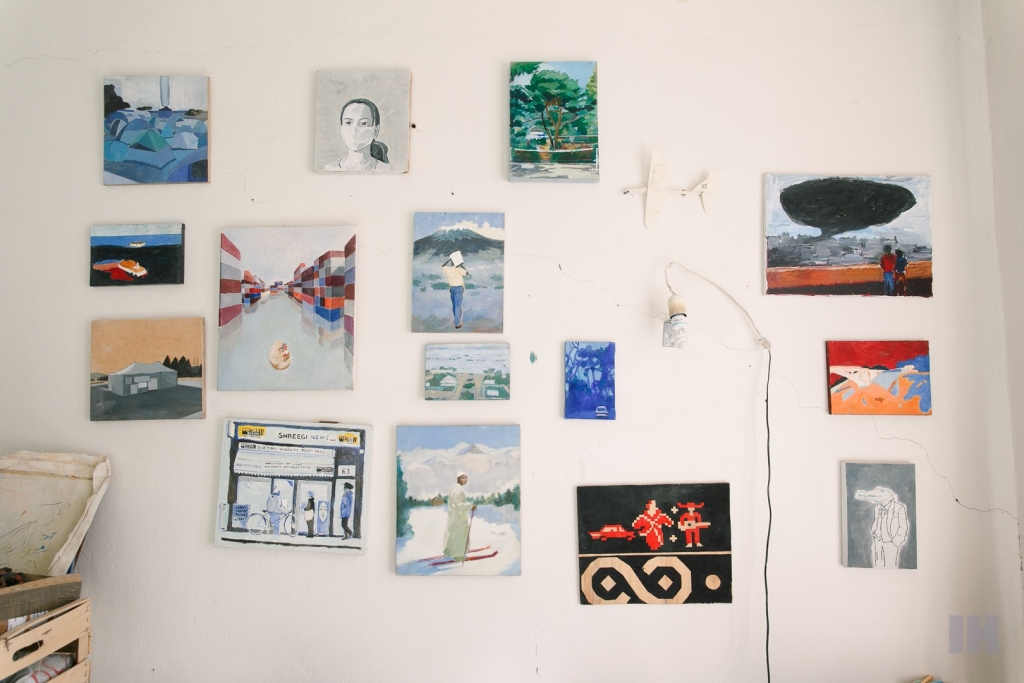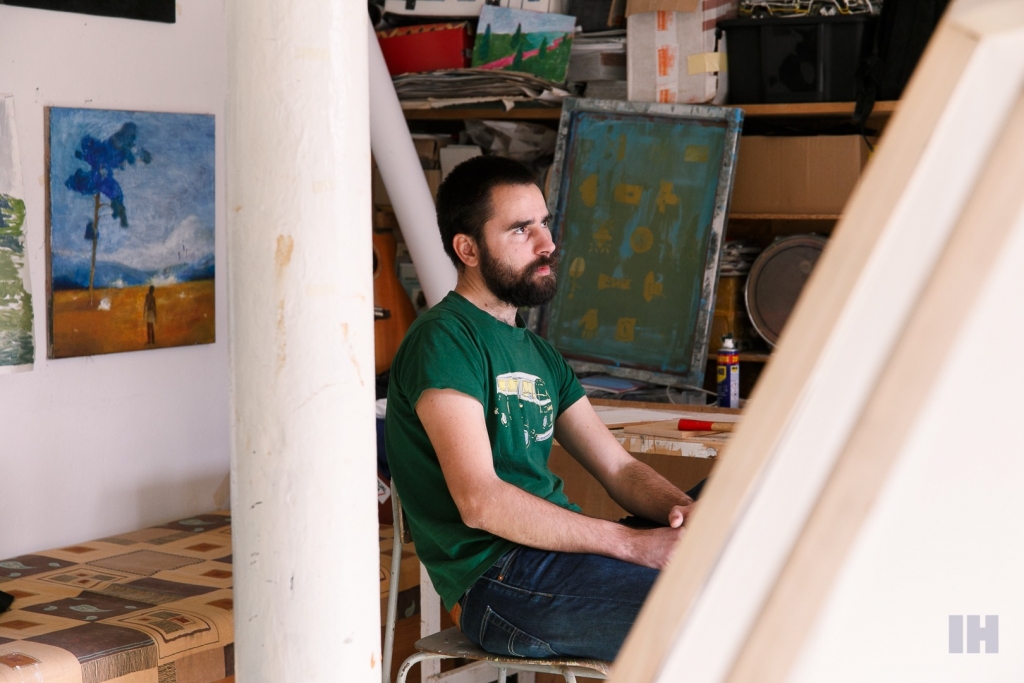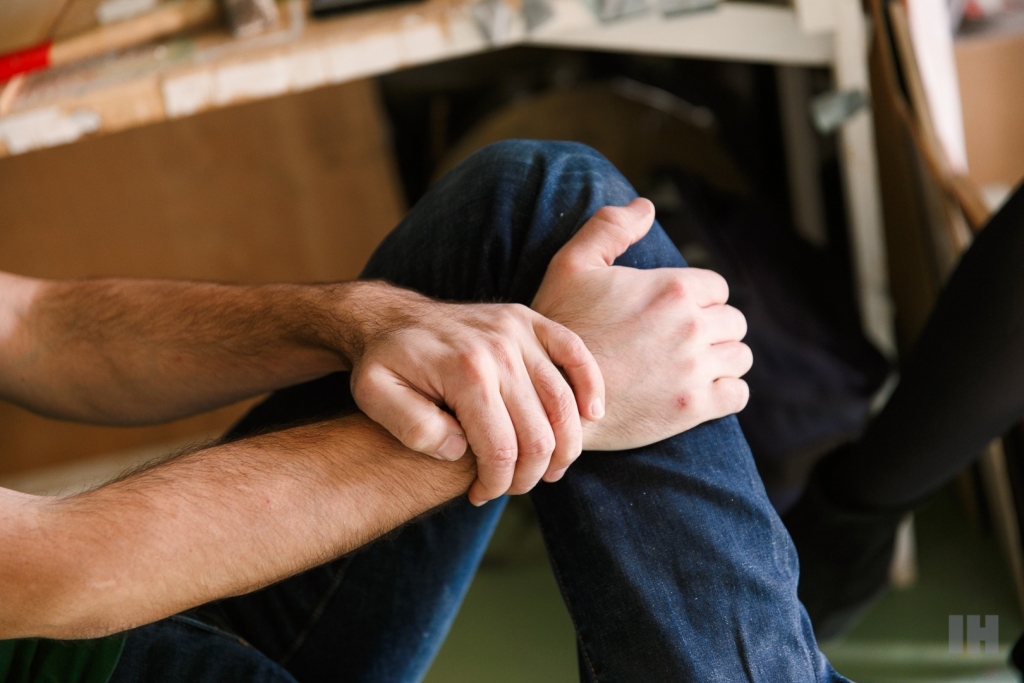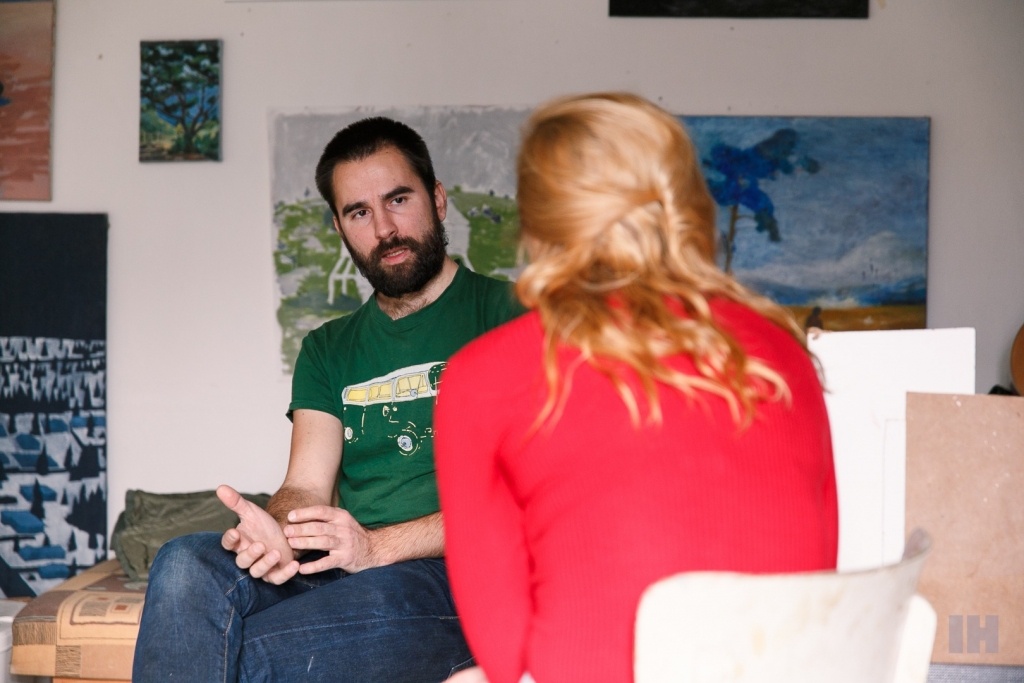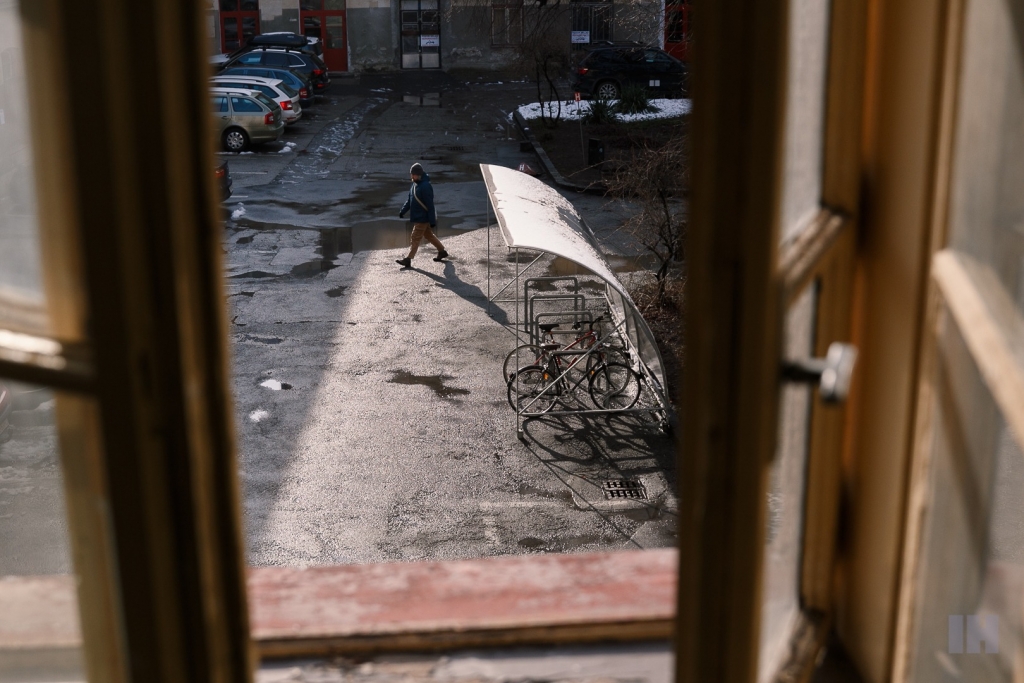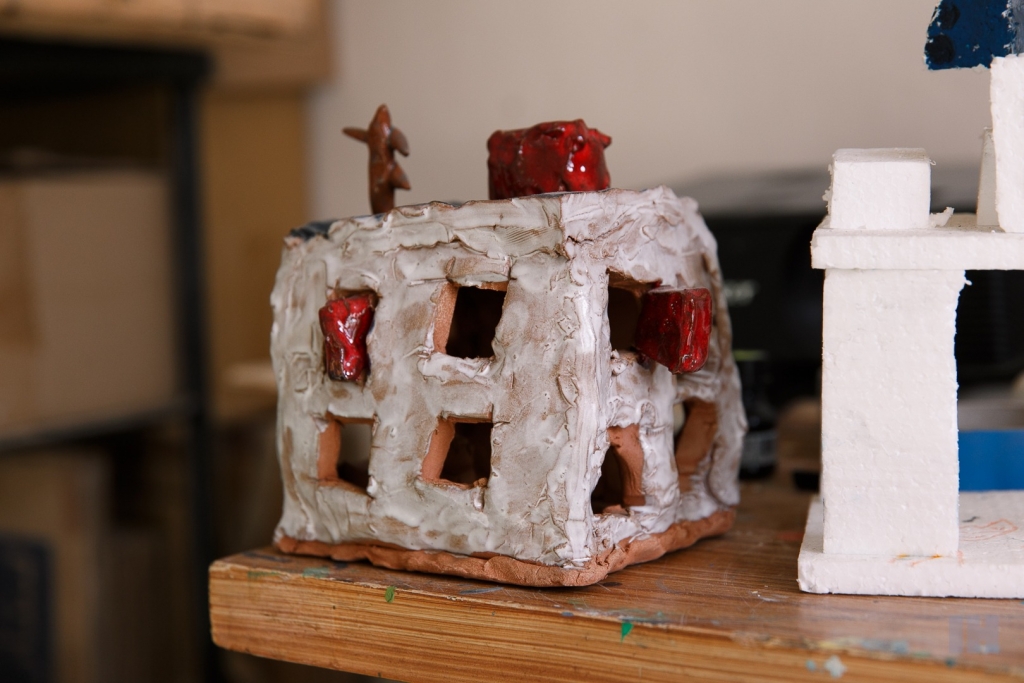Cape Verde, Luník IX, Centre Pompidou – Oto Hudec responds to migration and the climate crisis
He is a multimedia artist who uses art to show the impact of ecological threats and brings them closer to audiences in galleries. Oto Hudec connects painting with video, music, objects, photography, creates participatory artworks with Roma children, describes the lives of Cape Verdean migrants and sometimes, he even makes an entire factory disappear by covering it with nature. One of his works – Nomadia Traveling Museum – is now part of the collection of the prestigious Center Georges Pompidou in Paris. Oto has returned to live and work in his hometown, Košice, he avoids air travel and responds to local issues related not only to climate change.
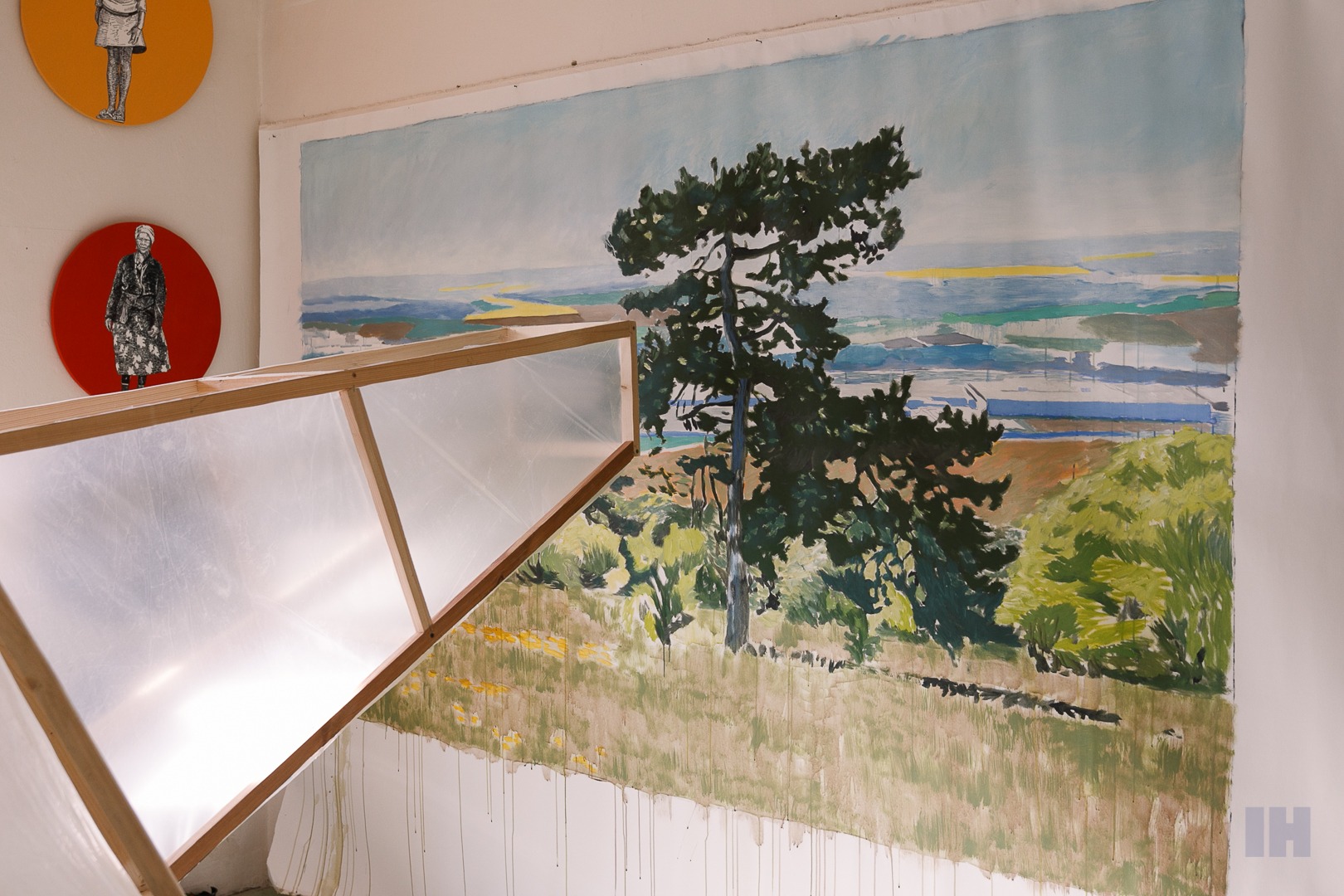
Peripheries of Lisbon vs. Cape Verde
After graduating from the Academy of Fine Arts and Design in Bratislava, Oto moved to Portugal for five years altogether. There, on the Cape Verde Islands, he had the opportunity to acquaint himself with the topic of refugee migration to the European Union. Oto claims that during his life in the former colonial power, he felt like an immigrant at times, especially when he was experiencing some cultural differences. Fascinated by refugees living on the outskirts of Lisbon, he began to portray them in his paintings and videos. Today, he evaluates this external observation somewhat negatively. A few years later, during an internship on one of the Cape Verde Islands, Santiago, he found himself for the first time in the country where people escape from.
“During this period, I managed to move from mere observation to actual interaction with those people whose fate I wanted to capture. The topics of climate and ecology are very interconnected in my opinion, I see them as almost one issue. We live in an enclosed space defined by the state, nation, Union. On the other hand, social, political and environmental movements transcend these boundaries. Many who migrate to Europe will find a better standard of living here, but this is not always the case. There are neighbourhoods in Lisbon that were torn down because people without Portuguese citizenship had lived there in illegal slums, sometimes for ten years on end. In such circumstances, conditions will get even worse than in their home country. For example, if our actions interfere with the functioning of the climate, people living in the Global South will feel the consequences of our behaviour in the form of drought or floods. People who are already in such a difficult life situation are then left only with the option to escape somewhere where it will be safer. Through art, we can respond to similar topics and create the necessary dialogue.”
Marginalized superheroes
Oto returned to Košice four years ago. He considers his hometown to be a good place to live in Central Europe with great potential for tourism. However, he admits he would not like the city to lose its spirit due to excessive gentrification in the future. Although he lacks the inspiration he got from the less developed countries for his artworks, he has decided to reduce his air travel and focus on projects that are close to Košice and require his attention. In this way, he participated in the Karavan project on which he has worked since 2012.
“In cooperation with Daniela Krajčová, we visited more than 20 Roma communities. We record interviews with children for four days and animate them afterwards. The process must, therefore, be very fast – the intention of this project is to take topics out of children’s lives and place them into the environment of galleries and festivals. With the help of an animation, we interpret their stories, insights into friendship, school and mutual help, which is often a central theme given the difficult conditions in which they live. Although Roma children from these communities agree on certain issues, they also dream of the same things as every other child in the world. They watch the same cartoons, adore the same superheroes. When we let them paint whatever they wanted using their imagination, they immediately drew Batman and other similar characters. Thanks to our cooperation in a different project, workshops organized under ETP Slovakia, a statue called Superheroes was created by approximately 30 children and it is now located on Luník IX. Personally, the sculpture reminds me of the talent of Roma children, who in their marginalized situation and limited conditions act as heroes too.”
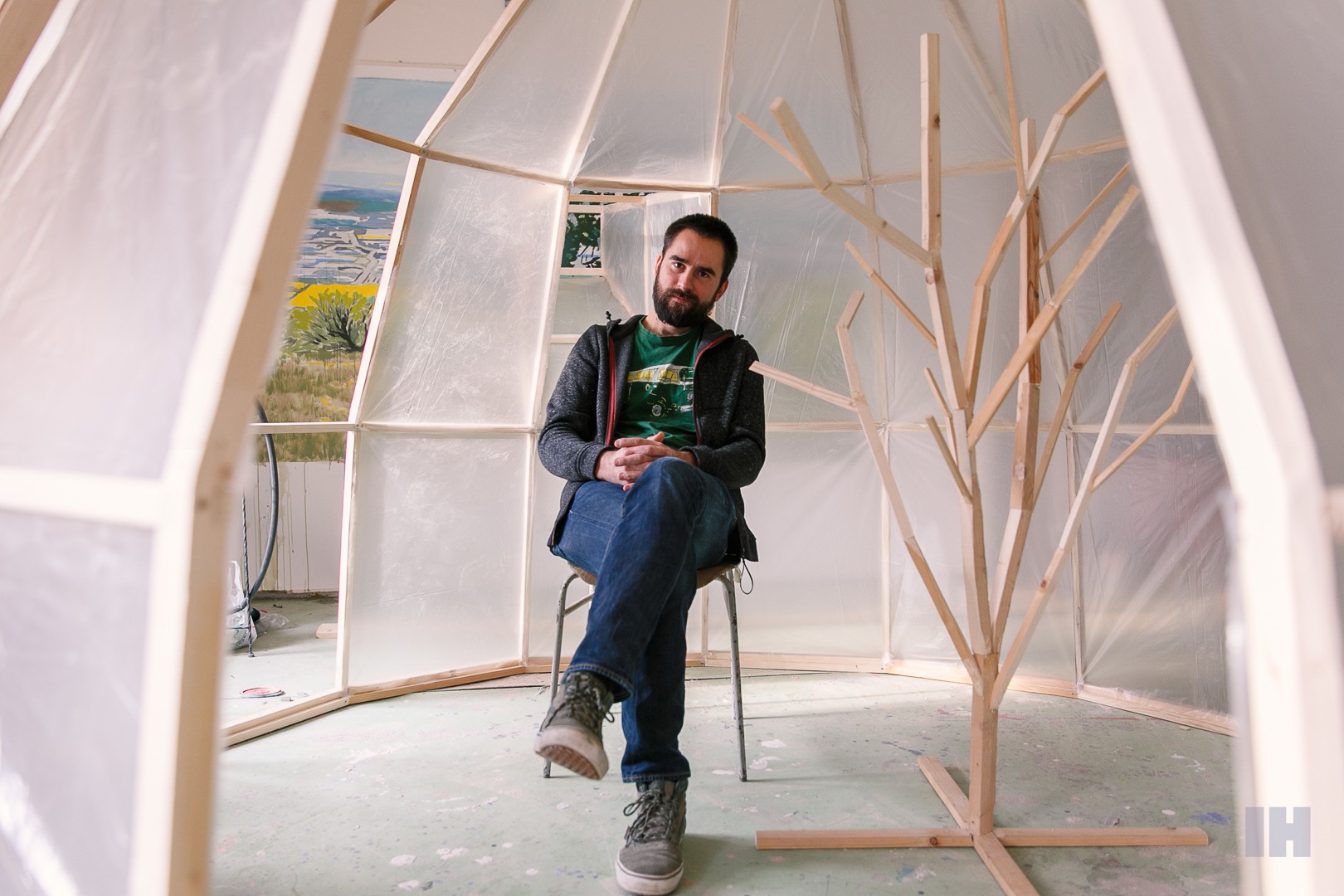
And there are still trees around the Berlin Wall
Among the other highlights of this multimedia artist’s portfolio, is the facade of the Slovak Embassy in Berlin. In his artwork, Oto repeatedly uses the motif of trees, which he connects with the theme of freedom: “In my design for the Slovak Embassy in Berlin, there are two trees on both sides of the wall. A root system runs beneath the wall, creating various symbolic explanations. It is proven that trees are able to communicate with each other using this system, they actually form a closed social system. I wanted to indicate that even though two nations are divided by an obstacle, there are always ways of exchanging information and ideas. It was similar during former Czechoslovakia – free-spirited and dissident circles tried to find a way to each other. The desire to break free is stronger than anything else and gradually it will cross the boundaries that we, as people, have defined.”
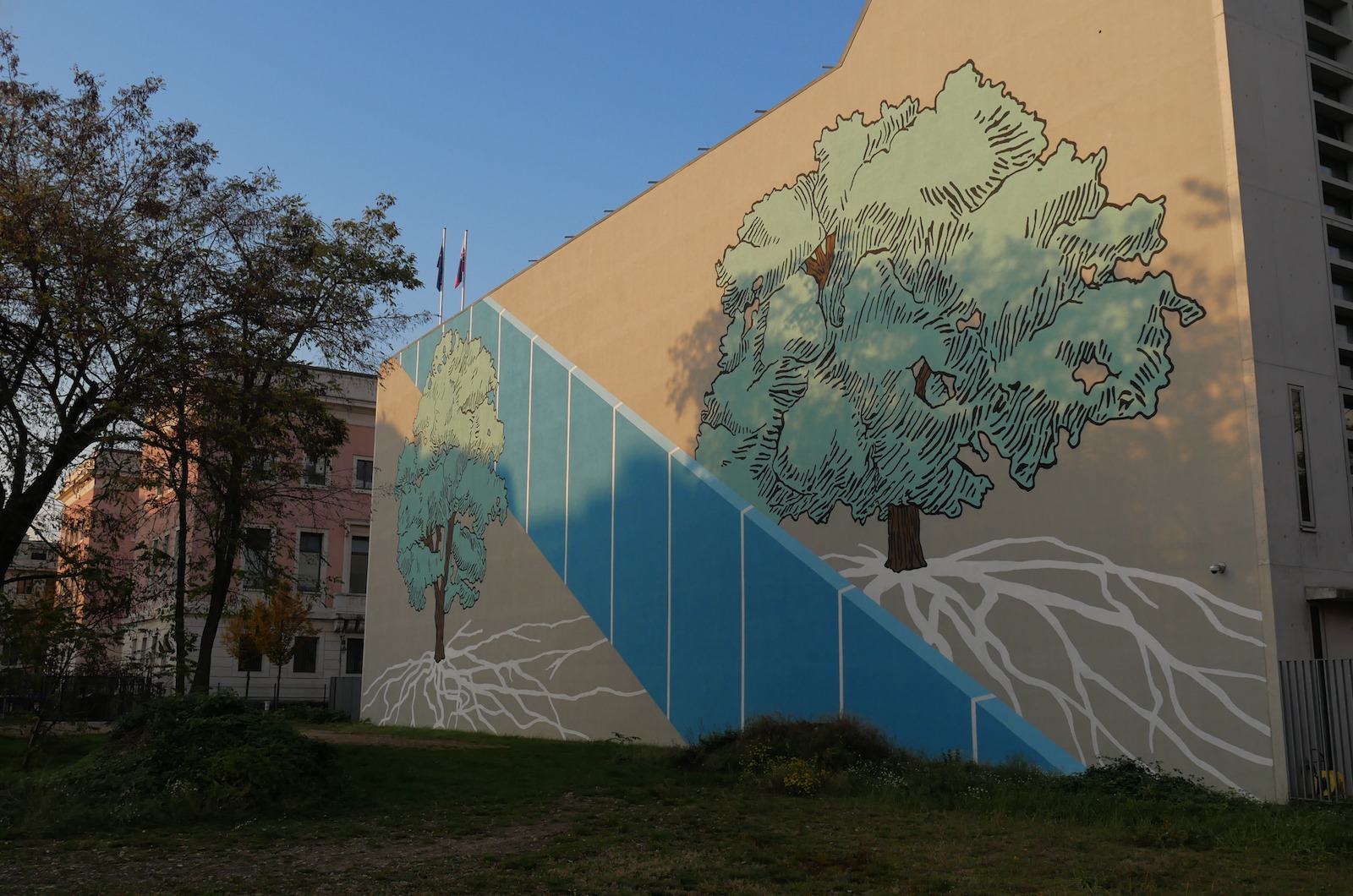
Relation aesthetics and moral aspects
For his art that reflects on social, political and ecological topics, Oto draws a lot of information from the media, newspapers and documents. At the same time, this form of work is associated with the internal conflict that had started for him back in Cape Verde. According to Oto, the message behind an artwork is much more authentic if it is based on direct cooperation and personal contact with the people it captures.
“For me, it is the most valuable part of the whole art-creation process. This is related to the theory of relational aesthetics which analyzes how relationships with people are translated into the artistic environment. Something that should be natural and genuine becomes a work of art, which is a bit of a moral dilemma for me. These are issues that need to be considered, and sometimes it is difficult to define where the correct limit is. We work with children who create works of art and then we take them to galleries. Therefore, I try to behave in such a way that the people I work with are heard and they do not feel used in any way. That is also the reason why I am grateful for Luník IX and its proximity – we cooperate with children on other projects, we know about each other and keep in touch.”
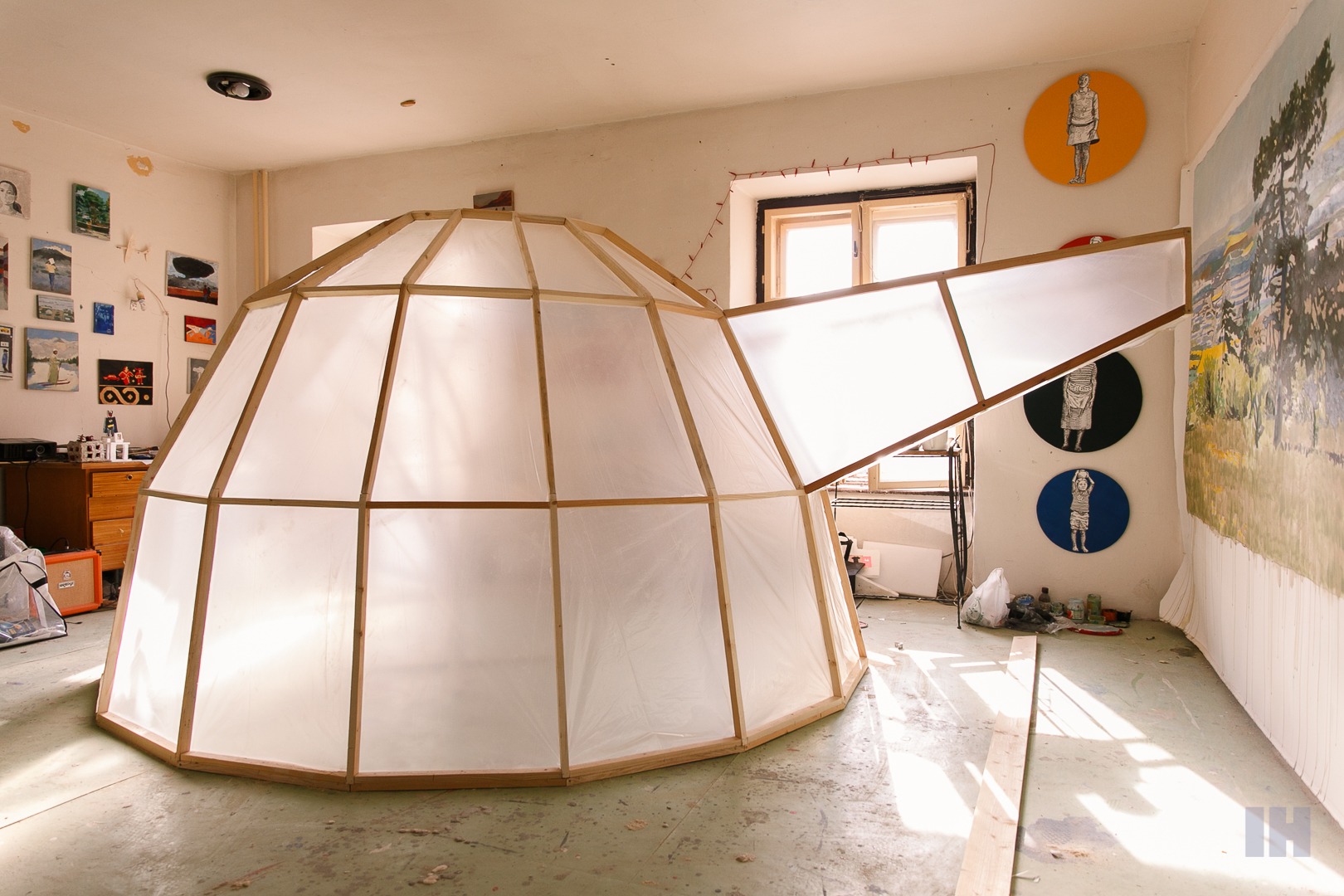
1 of 3
Oto is one of three Slovak artists whose work has been exhibited at the world-renowned Centre Pompidou in Paris. His project, Nomadia Traveling Museum, which was bought by the gallery, symbolizes a so-called museum of tents. The tents represent a collection of nomadic tribes, social movements, such as Occupy, or refugee tents: “The tents are made in various shades of blue and they hang in the air. The idea of this project is to create space for movements and tribes that have been either unsuccessful or gradually pushed out – symbolically, I put them in a place above the ground where they can exist freely. The work especially resonated in the years 2013 to 2016 when it was exhibited. It was the time when various social movements spread across Europe and America. The ecological crisis also affected the natural environment of the nomadic tribes whose lives were dramatically shaped by shrinking their territory.”
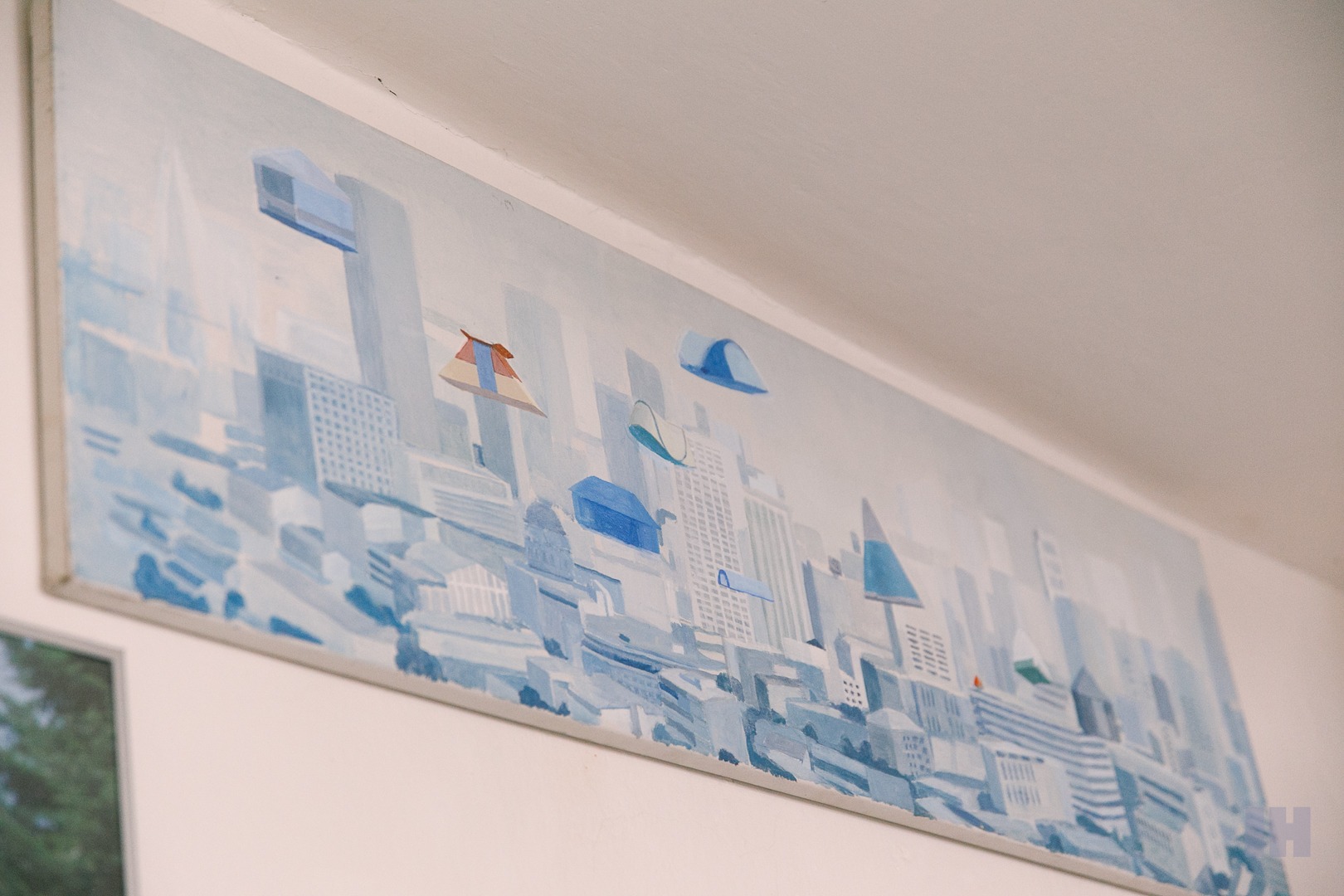
“An artist’s life is like being on a swing. One has worries and the feeling that he/she has to be constantly creative, say yes to every offer, just to survive. When my work became part of the collection of the Centre Pompidou in Paris, I experienced gratitude for being given recognition in the art world and self-confidence. But how does one measure success in work or life?”
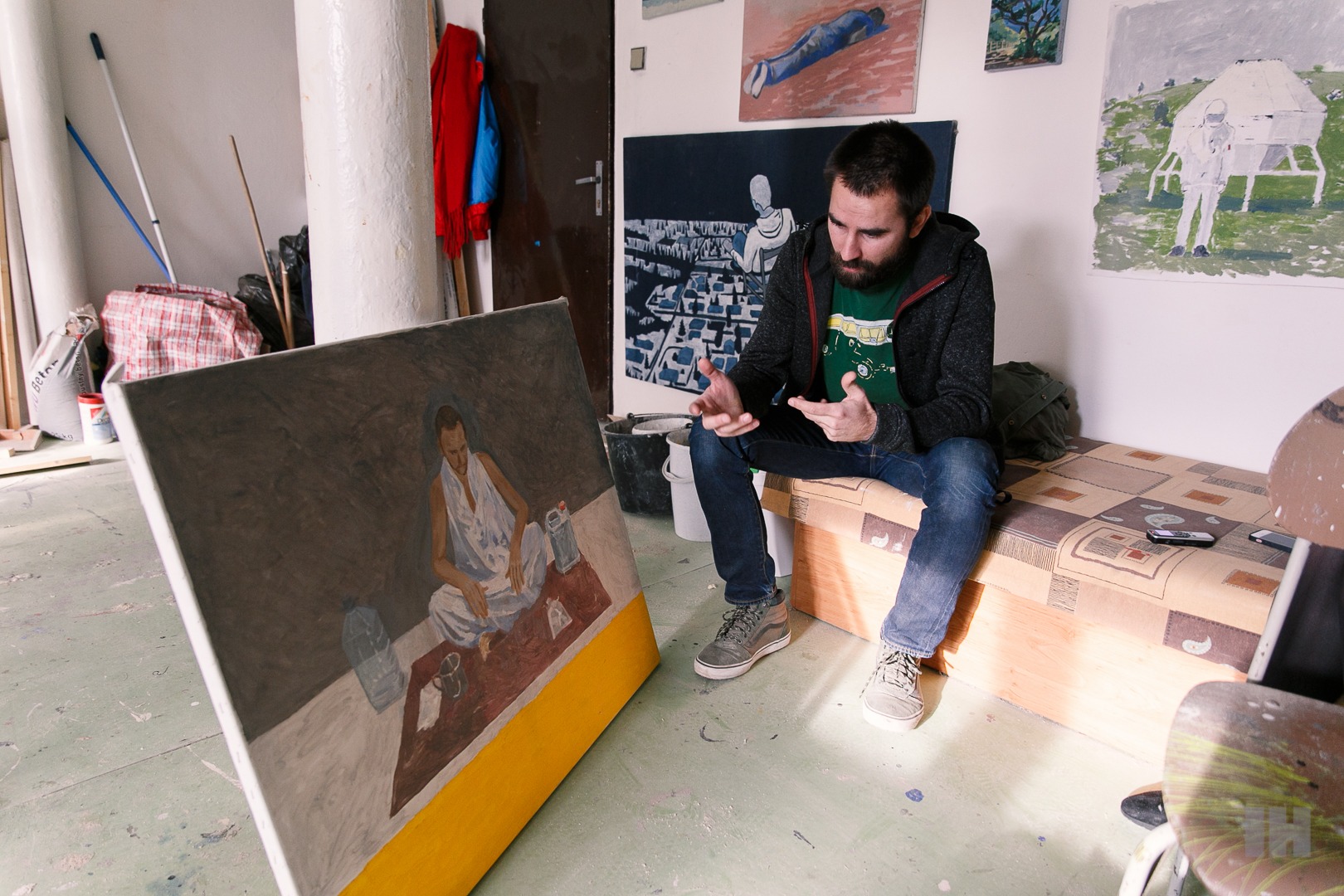
Dystopian plastic greenhouse
Nowadays, the workspace of Oto Hudec is a studio located on Strojárenská Street in Košice. One of the projects he is currently working on is creating a miniature model of a plastic greenhouse that he has in his garden: “I decided to create something between survival, life and art. I made up a story from a dystopian future with a climate crisis, heavily polluted air, desert storms, where my kind of garden survived. In it, people depend on living in enclosed living areas with a greenhouse which is connected to the house and creates oxygen for the household. I am also currently working on a painting where I want to cover the environment of the Jaguar Landrover factory in Nitra. I was already doing something similar in San Francisco when I painted over the city and only nature remained, it was kind of life after civilization. In general, I like to combine painting with video, music and react to the environment as an activist-oriented artist.”
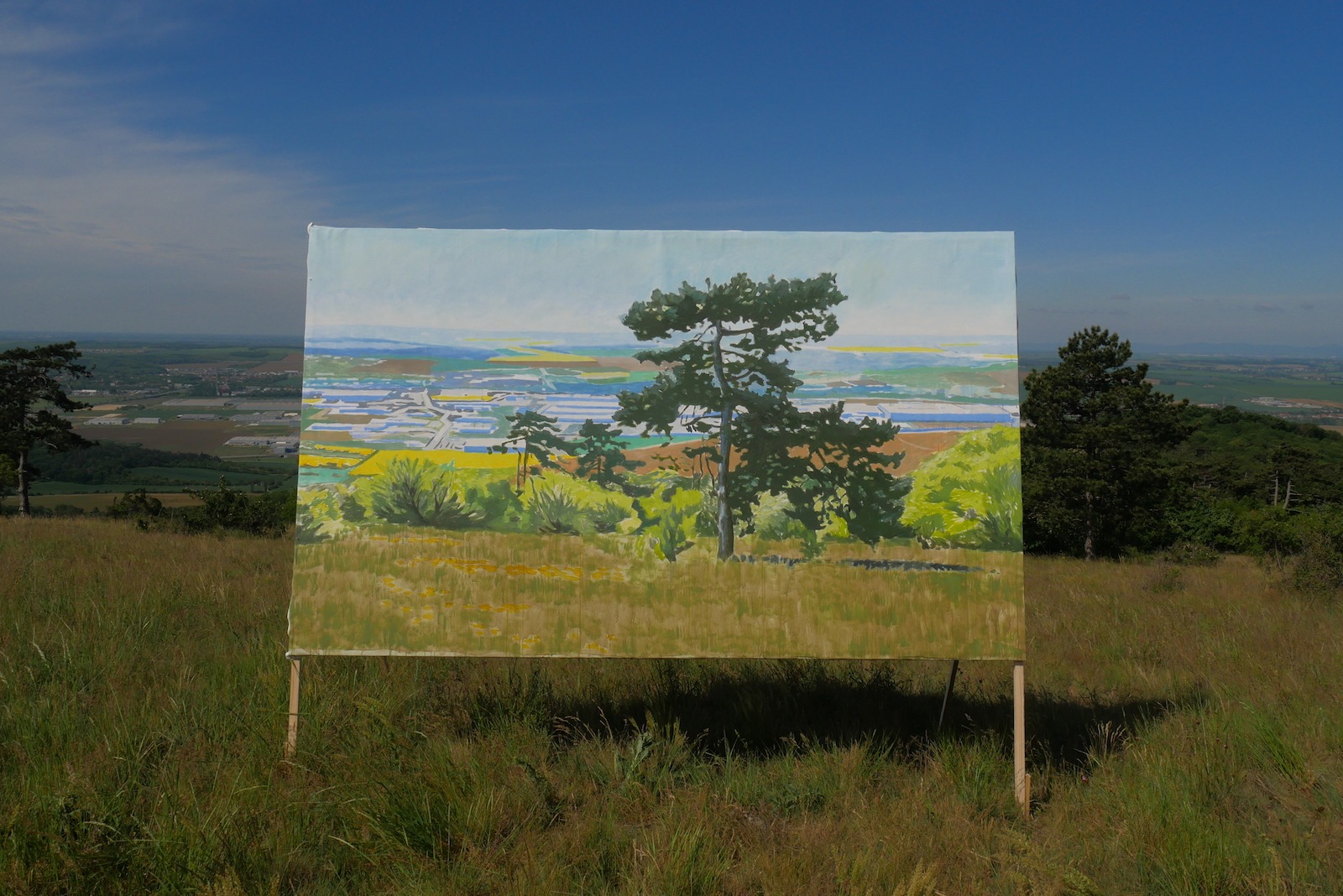
Discover artists of Košice and visit design rooms by The Invisible Hotel right in the middle of the Old Town, only a minute from studios on Strojárenská Street.
